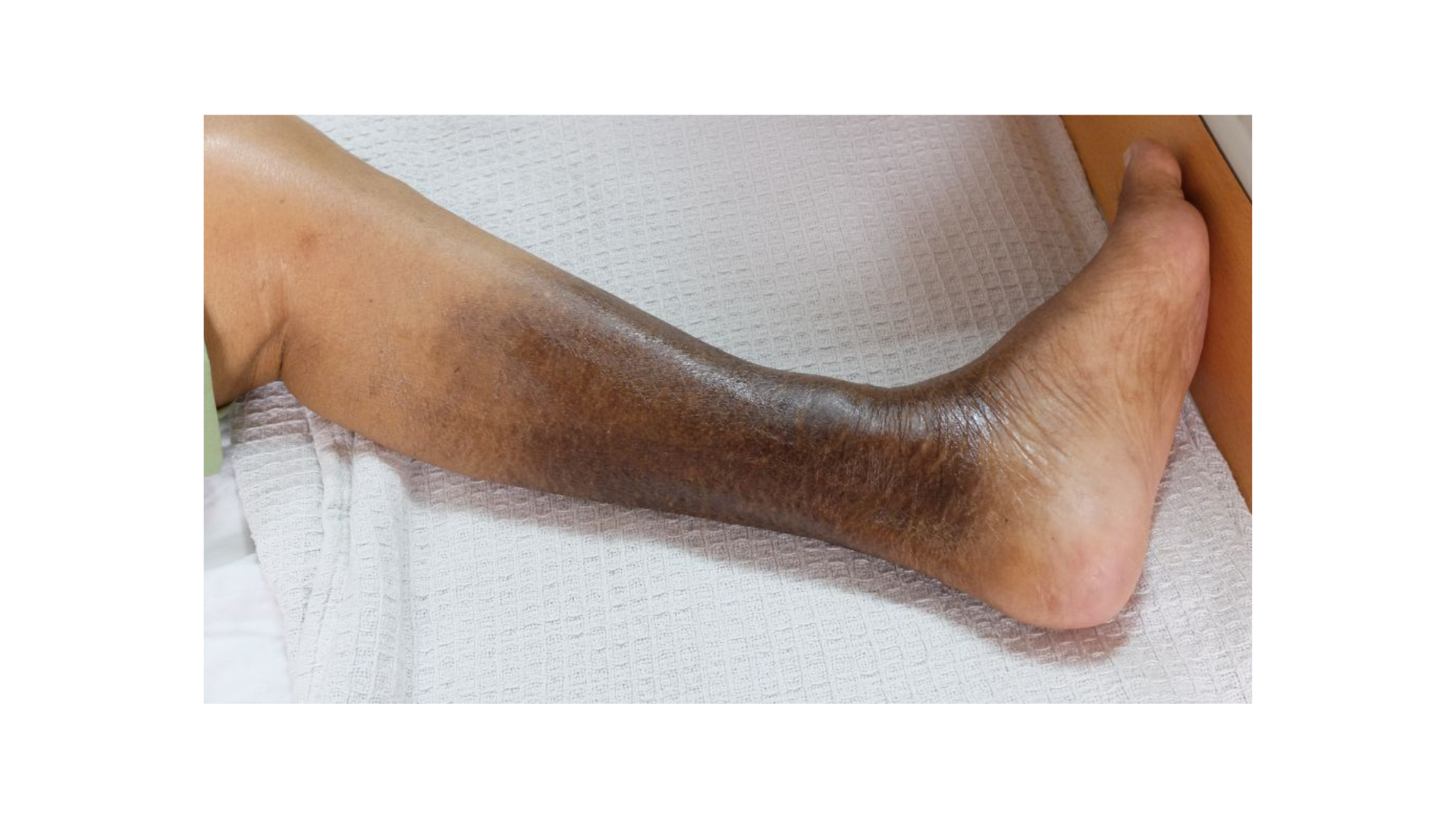Patient Populations: Barriers to Care
March 31, 2022
Introduction
The most effective wound care is patient-centered and individualized. Consideration must be made for unique population characteristics during an inpatient stay to decrease the risk of hospital readmission or further wound complications. Variations in wound care needs may exist among patients based on their ethnicity, age, socioeconomic status (SES), and comorbidities. Early identification of these characteristics and interventions to combat disparities should be considered.
Ethnicity Within Populations
The most obvious effect of ethnicity in wound care is the difference in skin pigmentation or tone. Depending on the tone of the patient’s skin, certain signs of infection or damage may be difficult to see. For example, candidiasis may appear as darkened and rough spots on darker-tone skin, rather than the redness observed on lighter-tone skin. More in-depth and comprehensive skin assessment is necessary for patients with darker skin tones. Any discoloration is important to document in darker-tone skin so that it can be properly observed or offloaded.
How much do you know about diverse patient population management? Take our 10-question quiz to find out! Click here.
At the physiological level, the skin of patients of different ethnicities has been shown in the literature to have variations in thickness, elasticity, and water retention.1 Therefore, interventions must consider the ethnic skin type of the patient to account for these differences. Someone with significant Asian heritage, for example, is more sensitive to topical chemicals,1 and doses may need to be adjusted. The literature also suggests that Black individuals are at a higher risk of more severe pressure injuries than White individuals, and their injuries will take longer to heal.2
However, the literature is unclear on the impact of confounding factors such as racial disparities in the socioeconomic background or health literacy. What the literature does show, however, is that greater deficits in activities of daily living directly relate to delayed healing.2 Additionally, research has shown that there are distinct differences in nutrition based on ethnicity, depending on the foods most important to specific cultures.3 The nutritional intake of each patient must be carefully considered, accounting for foods that are culturally important. Dietary recommendations should be culturally considerate and patient-centered. What appears to be most important when treating a wide variety of ethnic groups in wound care is to offer judgment-free and active listening. Clinicians must assess not only the wound itself but also the cultural, environmental, and genetic differences that may impact wound healing and increase readmission rates.4
Wound Care for All Ages
Pediatrics
The specific risk factors and needs of the pediatric population will change throughout development. Challenges in pediatric wound care include:
- Increased transdermal water loss
- Fragile skin
- Impaired epidermal barriers
- Impaired mobility and nutrition
- Limited ability to communicate needs and sensations
- Increased rate of absorption for topical agents
- Immature immune, renal, and hepatic systems
- Increased fear and anxiety (such as tape phobias)
- Decreased pain tolerance
- Increased mobility during play
- Risk of contamination near the diaper area
- A tendency to remove wound dressings5,6
Older children may need psychological preparation for wound care interventions based on their developmental stage.6 Therefore, child-life specialists’ should be included as part of the wound care team, as well as collaboration with caregivers. Documentation of a pediatric patient's reaction to dressing intervention is important. If their dressing typically becomes dislodged, this documentation allows for clinicians to consider other dressing options that may be able to better stay in place.
Geriatrics
In the geriatric population, aging DNA causes changes in the immune response, nutrient absorption, skin integrity, and circulatory system. The level in which these changes impact the geriatric patient can be made aware to the clinician through the use of documentation. A documented history of skin tears, for example, can make the clinician aware of the patient's skin integrity and which interventions may be suitable for this patient. On top of the normal aging process, however, older adults are also more likely to have comorbidities, including diabetes, cardiovascular disease, hypertension, and cancer.7 The combined effects of normal aging and comorbidities alter the skin microbiome, the microenvironment of the wound, and the body’s response to intervention. Early identification, documentation, and a multidisciplinary approach can help account for comorbidities, as well as careful dressing selection and nutritional assessment to combat the effects of normal aging.
Socioeconomic Background
For patients with low socioeconomic status (SES), wound care outcomes are affected by more than just financial limitations. Lower SES also impacts access to the health care system and health literacy. Additionally, environmental factors may increase infection risk, and poor nutrition is more prevalent in this population.7 Educational material should therefore be designed to be accessible to patients with lower SES, and consideration should be made to their primary language.4 Dressing selection should consider cost and accessibility of materials, as well as infection control on discharge. The inpatient wound care team should include social work so that patients can be connected to community resources before discharge to reduce the risk of complications and hospital readmission.
Comorbidities
Comorbidities can affect wound healing in two major ways: genetic or systemic.
Genetic Conditions
Congenital conditions affecting the patient at the genetic level can have an impact on the wound healing process. Conditions such as Ehlers-Danlos syndrome or osteogenesis imperfecta affect collagen formation, so wounds will likely require additional intervention to promote wound closure.8 These interventions may include prolonged use of sutures or external fixation to avoid skin tears.
Conditions such as Marfan syndrome affect the elastic and vascular structures. Wound complications arise not because of delayed time to heal, but also because the interventions must account for the decreased elastin.8 Sutures or other skin-dependent means of closure will likely be ineffective, and alternative measures will be required.
Systemic Conditions
Systemic effects are comorbidities that impact the person’s body more broadly but also affect wound healing. The following table contains a summary of how various comorbidities systemically affect wound healing.  For each of these comorbidities, it is important to include the necessary disciplines on the wound care team to ensure that associated factors are considered. For example, nephrology should be consulted for renal insufficiency, and a nutritional consultation should be considered for patients with malnutrition or obesity.
For each of these comorbidities, it is important to include the necessary disciplines on the wound care team to ensure that associated factors are considered. For example, nephrology should be consulted for renal insufficiency, and a nutritional consultation should be considered for patients with malnutrition or obesity.
Additionally, the effects of interventions for comorbidities should be considered, as well as alternatives during wound healing. For example, cancer treatment often involves chemotherapy or radiotherapy, both of which cause immunosuppression and delayed wound closure. Including oncology in wound care decisions can promote better outcomes by modifying interventions for both cancer and wound care to balance the diverse needs of the patient. Other interventions may include renal dialysis, immunosuppression after transplantation, cardiac conditions, dietary restrictions, and mobility needs for activities of daily living.
Conclusion
Each patient has unique needs and characteristics. However, wound care professionals can use population-specific considerations to guide clinical reasoning and ensure that they are considering both internal and external factors that may affect patient outcomes.

References
- Rawlings AV. Ethnic skin types: are there differences in skin structure and function?. Int J Cosmet Sci. 2006;28(2):79-93. doi:10.1111/j.1467-2494.2006.00302.x
- Bliss DZ, Gurvich O, Savik K, et al. Racial and ethnic disparities in the healing of pressure ulcers present at nursing home admission. Arch Gerontol Geriatr. 2017;72:187-194. doi:10.1016/j.archger.2017.06.009
- Collins N, Friedrich L. Posthauer ME. The nutritional melting pot: understand the influence of food, culture, and religion on nutrition interventions for wound healing. Ostomy Wound Manage. 2009(5)14-21.
- Pieper B. Vulnerable populations: considerations for wound care. Ostomy Wound Manage. 2009;55(5):24-37.
- Patel S, Tomic-Canic M. Neonatal debridement: tricks or treats. J Wound Technol. 2014;1(23):12-13.
- King A, Stellar JJ, Blevins A, Shah KN. Dressings and products in pediatric wound care. Adv Wound Care (New Rochelle). 2014;3(4):324-334. doi:10.1089/wound.2013.0477
- Fayne RA, Borda LJ, Egger AN, Tomic-Canic M. The potential impact of social genomics on wound healing. Adv Wound Care (New Rochelle). 2020;9:325-331.
- Beyene RT, Derryberry SL, Barbul A. The effect of comorbidities on wound healing. The Surg Clin North Am. 2020;100:695-705.
The views and opinions expressed in this blog are solely those of the author, and do not represent the views of WoundSource, HMP Global, its affiliates, or subsidiary companies.












Follow WoundSource
Tweets by WoundSource